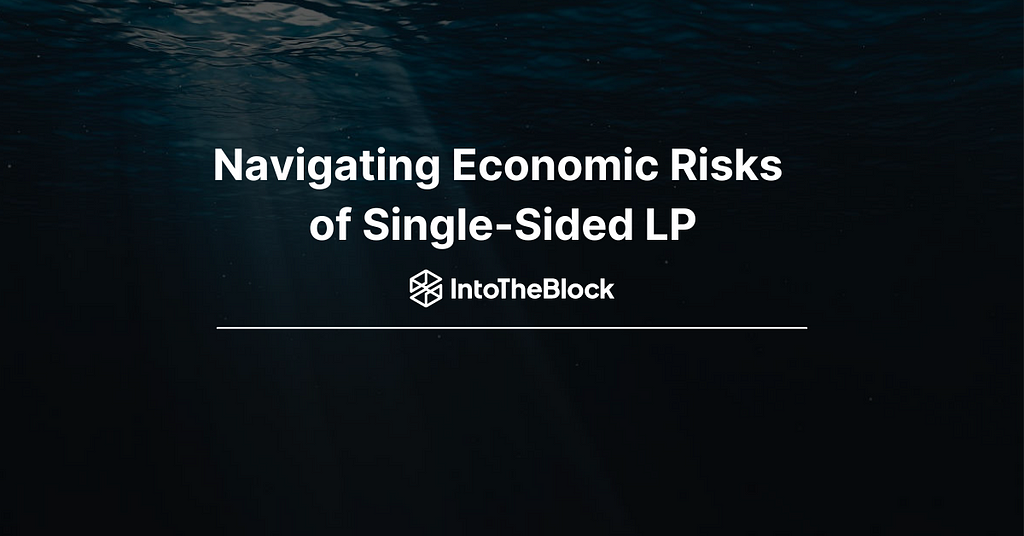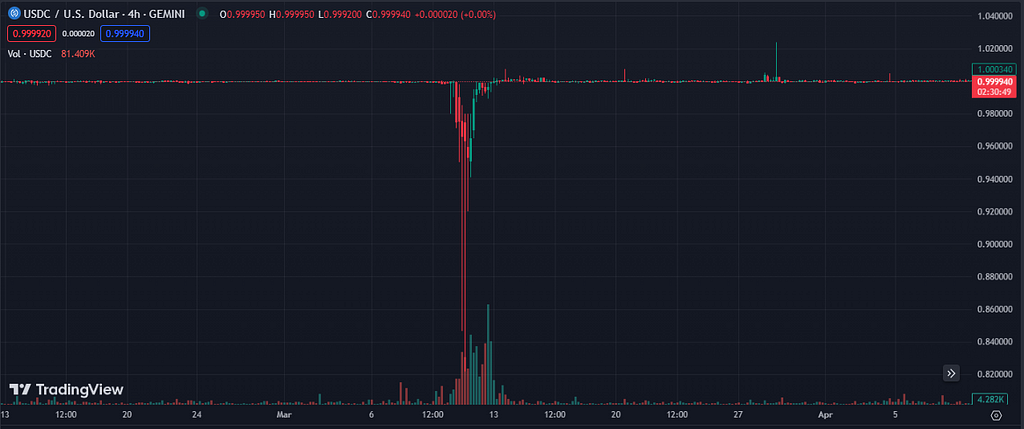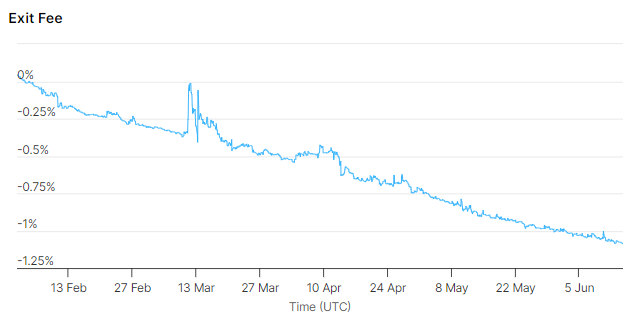Latest news about Bitcoin and all cryptocurrencies. Your daily crypto news habit.
Exploring hidden economic risks within Liquidity Providing strategies

Since Ethereum’s early days, Decentralized exchanges (DEXs) like Uniswap, Balancer and Curve have been at the forefront of the DeFi revolution, providing users with earning opportunities on their crypto assets. One of the primary ways to earn on these platforms has been liquidity provision, specifically, single-sided liquidity provision (SSLP), where a depositor supplies only one of the assets in a DEX pool. However, this method comes with its share of risks, making it vital to understand these aspects before diving in.
This article takes a step forward toward understanding the main economic risks for SSLPs and explores how to quantify and monitor risk.
TLDR;
- Some economic risks exist below the surface for single-sided LP.
- Monitoring and measuring these risks is no simple task.
- Users can take advantage of ITB’s suite of analytics and risk metrics to better navigate market uncertainty and inherent protocol economic risks.
Liquidity Provision — The Core of DeFi
Providing liquidity to any pair has proven to be a flagship of DeFi. Historically, LPing has been mostly done in both coins of an asset pair and in 50/50 weights and has allowed for trading (swapping) activities that need no counterparty –trading against a pool. Still, while AMMs come with many benefits unique to the DeFi world, they make estimating and hedging the associated Impermanent Loss and other risks (IL) a highly complex task.
Take volatile pairs for example; ETH-USDC (or a more speculative pair like PEPE-ETH for the thrill-seekers) have shown to return interesting yields to account for the IL incurred by LPs, but we have yet to find consensus in the space as to whether the benefits outweigh the costs incurred.
Deposit one, endure all: Single-sided LP
Besides the classic AMMs that require entering a pool with 50/50 assets, some, like Curve or Balancer, allow for SSLP. In a nutshell, SSLP takes the unique asset that a user wants to deposit in a pool and returns LP tokens that represent corresponding ownership over the entire pool, exposing the asset provider to all pool assets.
Economic risks of SSLP: Keeping the balance
For users seeking an optimal risk/return profile, SSLP serves as a user-friendly gateway to DeFi, bypassing the complications of more sophisticated financial instruments. Providing liquidity for stable pairs — be they stablecoins or stable-like pairs such as ETH-stETH — has become an attractive option for the risk-averse. This strategy offers modest APYs by pooling large capital amounts.
However, the glittering appeal of SSLP isn’t without its potential pitfalls. Economic risks await below the surface, with pool imbalance leading the charge.
SSLP Risks Example
Let’s take Curve’s 3Pool as an example. Say that by the beginning of the year, a user had some spare USDT that they’re sitting on while waiting for a lower entry into their preferred asset. The safest bet would be to deposit all of it in Curve’s 3pool (USDT/USDC/DAI), as the pool is among the most liquid for stablecoins in DeFi, with over $350 million in value locked.
Where is the trick? By depositing USDT single-sided, Curve automatically returns LP tokens, which represent the corresponding ownership over the entire pool, effectively buying the other two assets until the balance of the time of depositing is hit.
We can then easily map the economic risk. Let’s take the March 11 USDC de-peg, where USDC traded at a discount of almost 10% in some exchanges. Curve’s 3pool –originally balanced at ~30% of each asset– became imbalanced due to many LPs withdrawing USDT and DAI. This meant that, for those that weren’t the first withdrawing, the pool would take on an ‘exit’ fee for withdrawing the least supplied assets single-sided, as the relative liquidity for USDT/DAI was lower than that of USDC.

Source: TradingView

Source: IntoTheBlock Curve 3pool Analytics: Liquidity Comparison
Interestingly enough, users don’t need to navigate through stablecoin de-pegs or other black-swan events to be exposed to these risks. Due to the nature of the pools used, a simple shift in token preference might be enough for a pool to suffer imbalances that result in sizable single-asset exit fees.
While this might seem trivial at lower balances, the issue escalates exponentially as the size deposited grows. Exiting single-sided with sizable amounts from unbalanced pools might result in large exit fees, potentially higher than the returns one is getting as a return from the accrued pool fees and incentivizing rewards, shifting the risk/reward ratio.

Source: IntoTheBlock client dashboard template: Exit fee

Source: IntoTheBlock client dashboard template: Whale Size Impact
Take the above graphs for example. ITB risk analytics simulates the exit fee that a specific position would incur if withdrawing at each moment. Additionally, it estimates the amount of liquidity that would need to be removed in order to suffer an exit fee greater than 1%, given the token balances in the pool, initial single-sided deposit, and other variables on a block-by-block basis.
Managing Economic Risk in SSLP
Taking a proactive approach to risk analytics can enable users to both anticipate potential economic threats and act on them, taking preventative measures. It can also streamline risk monitoring and capital flow tracking across protocols and chains.
One way to achieve this is through using high-grade risk indicators and dashboards. For instance, they can identify vulnerabilities in lending and borrowing protocols, or even be used as tick-boxing mechanisms to create risk thresholds adequate for each user.
By making robust data and indicators publicly available, we can provide comprehensive insights that benefit not only protocols, but users, institutions, and the ecosystem at large, creating a positive ripple across DeFi.
Through ITB’s analytics and risk suite, users can have access to APIs and create signals to anticipate potentially adverse market movements and economic risks, having a more automatized control of their portfolio allocations and exposure.
Navigating Economic Risks of Single-Sided LP was originally published in IntoTheBlock on Medium, where people are continuing the conversation by highlighting and responding to this story.
Disclaimer
The views and opinions expressed in this article are solely those of the authors and do not reflect the views of Bitcoin Insider. Every investment and trading move involves risk - this is especially true for cryptocurrencies given their volatility. We strongly advise our readers to conduct their own research when making a decision.